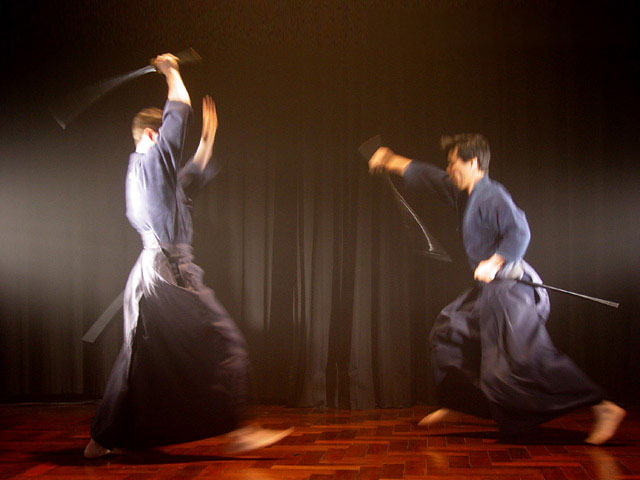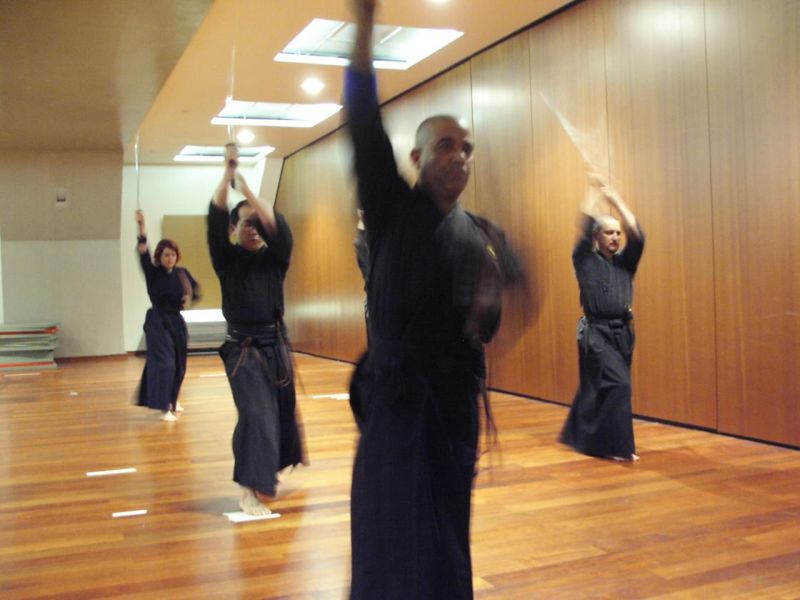Iaido
Iaido (ee-eye-doe), is derived from Japanese Kenjutsu, this is means swordsmanship techniques, the practitioner makes a study of ‘drawing the sword’, then cutting, and a return to its scabbard, with the least amount of exertion. The core essence of iaido, is that it is a non-combative discipline that is practiced for building onto person’s spiritual cultivation, this discipline is quite different from its forerunner, Iaijutsu. Iaijutsu is also a sword drawing art that is practiced with a combative application that is stressed during the training.
Iaido today is practiced as an aid to improved coordination, self-discipline, and also for the sake of posterity. Most of the styles of iaido, for instance the cutting techniques are today valid, and the practice of iai for war or defense is not necessary in today’s modern times. However, training in order to deal with a surprise attack, with the minimum of exertion, at the same time defending oneself, can be seen to be a valid pursuit for day-to-day interaction with other people.
Mental and physical benefits are available to all iaido practitioners, without regard to the person’s martial arts background.
One style of iaido taught is called Mugai-ryu, it was taught by the late Soke Shogo Kuniba, of Seishin Kai (known in USA as Seishin Kai Martial Arts, Inc. and in Japan as Seishin Kai Karate Union). Mugai-ryu was founded by Tsuji Getten Sakemochi (1650-1729) during 1695. Tsuji, was the son of a farmer, he began his experience in swordsmanship as a young disciple of kenjutsu at the early age of thirteen. As a result of 30 years of constant training Mugai-ryu was the result.

